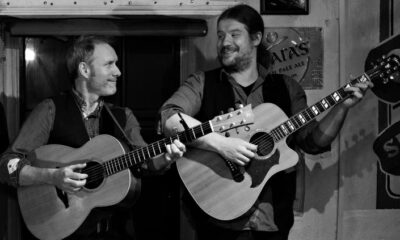City Lives
Grave love affair sees Tony care for Forthill
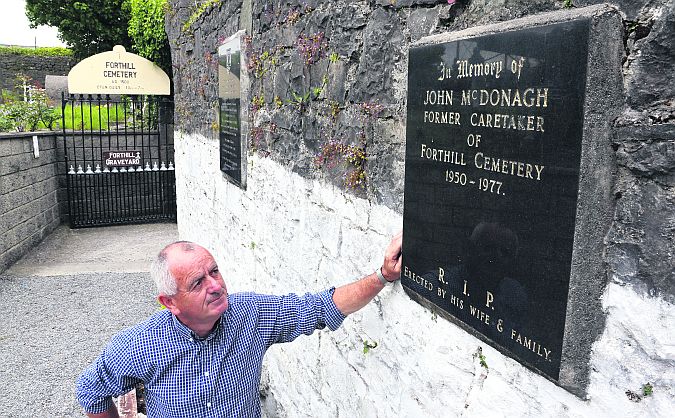
City Lives – Bernie Ní Fhlatharta hears how Tony McDonagh cares for an historic city cemetery
Most of us never stop to think who takes care of our cemeteries and until a loved one dies and is buried in one, why would we ut the McDonagh family have had a long association with the oldest cemetery in Galway City, Forthill, and they love it in a way that unimaginable to anyone who would prefer if they never had to step foot into one.
Tony McDonagh is the second generation of his family voluntarily caretaking at Forthill and now his grandchildren have joined the team, making it a four-generation operation!
Tony, who is originally from MacDara Road in Shantalla and now lives in Ballinfoile, can’t remember a time when he wasn’t associated with Forthill.
His father, John, was the caretaker and Tony and his siblings helped in the weekly clean-up and burials over the years. And when his father died, a plaque was erected on the boundary wall in his memory, right beside another plaque remembering the sailors of the Spanish Armada who were executed and buried there. That plaque was erected in 1988 by the Spanish Government to mark the 300th anniversary of the Spanish Armada being shipwrecked off Ireland’s west coast.
This private cemetery of Forthill dates back to the 1500s but the official burial records of this Augustinian cemetery only go back the early 1900s. However, old slabs that have been exposed show burial details dating back to the late 1800s.
Tony, a retired army man, now spends a few hours most days weeding, cleaning up or even talking to tourists who visit this heritage site.
Forthill is still a working cemetery, but it doesn’t have many new burials compared to the other two graveyards in the city, Rahoon, and the New Cemetery in Bohermore.
However, thousands are already buried in that two-acre plot at Lough Atalia, because it was traditionally the custom to put seven or eight bodies in the one plot.
A corner of Forthill is used by the Augustinian order and it is where priests and nuns are buried.
The little chapel at the entrance has been re-roofed thanks to the donation of materials and the labour of the McDonagh family and is used at least once a year for Cemetery Sunday, which takes place in November, as it did traditionally.
Tony and his son Mark, who is now in Australia where he has married and settled down, did a lot of work on raising ancient slabs to ground level. These gravestones have eroded by centuries of Irish weather but some names can still be deciphered on them.
The raised vaults, some surrounded by railings painted in black, look very gothic but despite this there is a peaceful air, a serenity about the place.
“I love it here,” says Tony. “Sure it gives me something to do and I have a special feel for it because my father loved it so much. He used to tell us many stories about the place, about hearing voices and sounds near the back wall . . . but I never heard or saw anything. I feel very comfortable here. We have a laugh but we are never disrespectful. I was brought up to respect the dead.”
Local businesses have been very good over the years, according to Tony. He gives particular mention to the late Dr Joe Costello and his family, who took a special interest in Forthill.
For more, read this week’s Galway City Tribune.
City Lives
Michael on top of world after years on streets
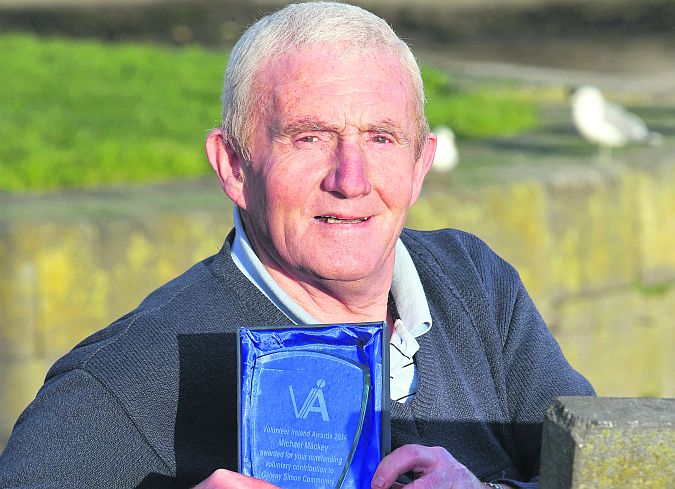
City Lives – Denise McNamara meets Michael Mackey, award-winning Simon Community volunteer
When asked what age he is, Michael Mackey’s response is simple: “I’m 61 and the happiest man in the world.”
The sheer glee in his voice as the Claddagh man answers this question stops you in your tracks. Here is a man who has sunk to the depths of despair and somehow managed to climb out, reaching the pinnacle of a ladder that he could barely have dreamed of.
If ever there was a poster boy for turning your life around, Michael Mackey is it.
This month he was given a national award for his work with the Galway Simon Community. He was honoured in the Social Work category of the Volunteer Ireland Awards and attended a gala awards ceremony at Dublin City Hall.
Michael has brought his two awards along to the interview; one is a framed picture, the other a glass trophy and he beams as he points out the features.
Before meeting Michael for a cuppa in Born Cafe one Wednesday afternoon, I pass by a man in his 40s who is regular street drinker, his foot has been broken and he hobbles along with a walking aid, his face red from the elements, his clothes drenched from the heavy December rain.
I ask him about the guys he once drank with – there were a group of about 20 of them who used to gather in Eyre Square and Shop Street – and whether any of them were inspired to follow in his footsteps. He shakes his head.
“Quite a few of them have died – the vast majority of them. Mainly from the alcohol and the weather,” he says matter of factly.
Michael grew up in a family of fishermen, one of three boys, raised single-handedly by their mother Mary Mackey.
As a youngster he used to do some shell fishing. The minute he had made his Confirmation, he left school. “They didn’t think I could go no further. So I started selling newspapers. The Sentinel. The Tribune. My pitch was in Bohermore on Friday. It was great money. That time all the money went on the tables. Sometimes two shillings went down the stocking but you’d be asked to remove it so you’d keep nothing.”
He graduated to a messenger boy, delivering groceries with McCambridge’s, clothes for Brennan’s, meat for Kirwan’s and hardware for Raftery’s for about five years.
Michael then worked as a labourer with Galway Corporation before polishing glass with Galway Crystal before it closed down in 1979. He got a job on the Docks working on the big oil tanks and it was around that time his problems started to materialise.
“I was alcohol addicted. I was creeping into it. I was missing days. I had no interest in work. I was interested in getting paid but not working. I got sick, between the alcohol and mental health issues, I wasn’t too good.”
It was years later that Michael was diagnosed with bipolar disorder. But back then he blamed it all on a bit too much gargle.
“I was a different personality, a different person. I was saying things and doing things to make out I was someone else. You could be a bank manager, or a movie star. I was so caught up in the alcohol. I was drinking everything I could get my hands on. Anything and everything.”
He had lived with his mother in the Claddagh, but he moved out of his own accord.
“From the time I was became homeless it wasn’t the nightmare some people say. I didn’t like anybody telling me what to do. There used to be two boats opposite Claddagh Church, there was a couple in one and I sheltered in the other, or sometimes under a bench. You have your own routine.
He cannot say how long he remained homeless, but it was a long time. To survive, he took to begging, which he found he had an aptitude for.
“I’d be telling different stories to different people. It was like trying to run a business. I’d sit on the stone seat opposite Claddagh Church and think which way to go, which direction to take. You’d only have to meet one – not 100. Sometimes they’d give you a lot of money, you’d give them some story about trying to stay out of prison, trying to keep your home, sure I was never in trouble with the guards.”
For more, read this week’s Galway City Tribune.
City Lives
Magical musician Carl is happy to shun limelight
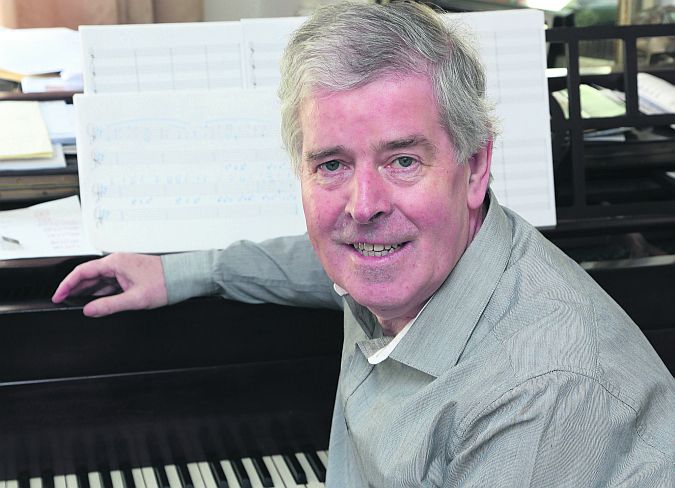
City Lives – Denise McNamara meets Carl Hession, composer, musician and retired teacher
Although he has spent his life’s work teaching young people to play music, Carl Hession’s first experience with a music teacher was less than inspiring.
A local woman taught himself and his two sisters piano near their home in Belclare, outside Tuam. “I remember she sent a note home to my mother. The two girls are quite good, but the boy is useless – don’t send him back,” he recalls.
Fortunately it did not deter Carl. It was almost inevitable that he would end up immersed in music, such was the rich musical legacy he came from.
His father was handyman by day and fiddler by night, who played with a céilí band. His aunt was Maggie Hession, who was one of the main singers in a famous collection of Connacht songs in Irish the 1920s called Amhráin Mhuighe Seóla, one of the very few to contain notated melodies as well as words. Most of them were love songs; they were collected across Galway and Mayo by Eileen Costello, who was active in the War of Independence and became a senator in the Irish Free State.
The Hession home was an open house for traditional music, peopled by a seemingly endless succession of well-known musicians, among them uilleann pipers Seamus Ennis and Willie Clancy, fiddler Ted Furey and accordionist Joe Burke.
“At that stage I would be called upon to accompany them on the piano. I’d stay up half the night with them and then go to school the next morning,” he recalls, smiling at the memory.
The family moved to Salthill and Carl was sent to St Pat’s and the Bish, where he was more into sport than music. When he started lessons with Vera Dooley whose family were jazz musicians, he made a huge leap forward in his musical education.
“She was a big influence. She taught classical and I did quite a lot of theory exams. In one exam through the London College of Music (LCM) I got 100%. I was given the gold medal for first place in the British Isles for the ALCM theory exam by the college director William Lloyd Webber – father of Andrew. I remember my mother saying at the time, what a strange name he had.”
While still in school Carl joined several bands of all sorts of genres – traditional, pop and one them, called Plain Lazy, was a jazz rock outfit.
“That band was very ahead of its time. The stuff was so way out there people would ring to see if we were playing and then wouldn’t turn up.”
He travelled throughout the province to compete in fleadhanna ceoil and has a number of titles, among them an All-Ireland medal as a trio with accordion player Joe Burke and fiddler Kathleen Collins.
He completed a degree in history and economics at UCG (now NUIG) and did a HDip. After getting his second diploma in piano (LLCM) he decided to go to University College Cork to study music.
It was from there that Carl branched out into composition under the watchful eye of department head, Professor Aloys Fleischmann.
“Prof Fleischmann was a brilliant teacher and composer. In our second year we worked continually on harmony and counterpoint. It was very academic. In the final year we had to write a fugue in the style of Bach – it was a three-hour original piece.
“It wasn’t easy. This guy was German, he cracked the whip, but he was lovely. And brilliant. In our second and third year we had to write for the Cork Symphony Orchestra. I got very much interested in orchestration and composition.”
At weekends, Carl would return to Galway to play at the Hilltop in Salthill with Gerry Mullholland and Jackie Murphy, recording a single called Galway Bay. He was also playing with the folk band Winter Well, which was into the music of Paul Simon and James Taylor.
For more, read this week’s Galway City Tribune.
City Lives
Declan puts Galway in picture for film award
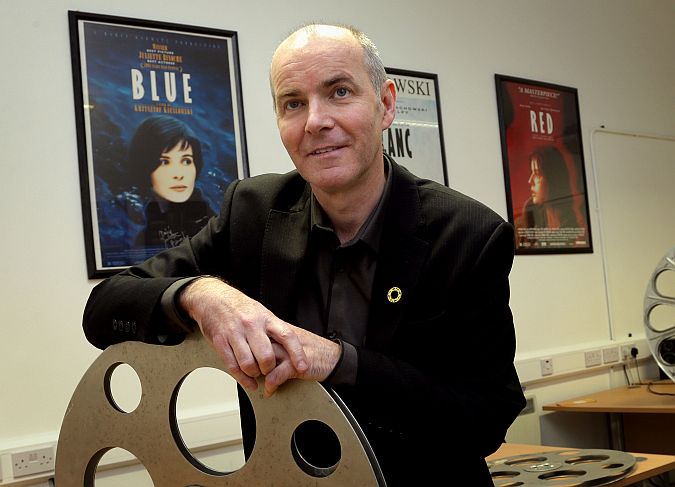
City Lives – Bernie Ní Fhlatharta meets Declan Gibbons, manager of the Galway Film Centre
There’s a thriving film and television industry in the city — so much so that the city has put in a bid to become a UNESCO City of Film.
One of the people behind that bid is Declan Gibbons, a Donegal man who has made his life in Galway where he has worked in the arts for the past three decades.
Declan is the Manager of the Galway Film Centre, which is based in the GMIT’s Cluain Mhuire campus, the art and media hub of the college.
The Centre is not only a resource centre for filmmakers, but is also involved in adult education, some of it involving community groups who make the ID series of short films.
The Centre is hosting its annual Film and TV Seminar this week in the Connemara Coast Hotel where a number of writers and creators of some of television’s most popular shows will be guests, people like the writer/creator of The House of Cards, Beau Willimon.
The series, which stars Kevin Spacey, was Netflix’s first TV venture and like HBO, the pay-per-view channel in the US, they will be producing more shows.
Declan is proud of this year’s line-up and recalls a few years ago inviting the creator of Breaking Bad, Vince Gilligan.
“Honestly we didn’t think he would come. It was Season 3 of Breaking Bad and anyone who watched it loved it. My colleague Mary Deely sent out a hopeful email and low and behold he jumped at the chance.
“As it happened he had never been to the UK or Ireland and he loved it and had a great visit. My biggest claim to fame is that the character in Season Four is named after me! We got on very well,” says Declan.
The seminar is geared at those working in the industry but is open to anyone who wants to pay the cost of attending.
Ireland’s three biggest film production companies will be in attendance and the seminar is now an annual destination where people can come together to not only discuss issues relating to the business, but also network and make contacts.
“We also try to promote Galway as a location. In the West we have the know-how, the trained personnel and crew and we offer technical back-up, studio space and world-class facilities.”
The film and television course in GMIT is a Level 8 course offering an Honours BA degree. Currently there are 30 final year students on the course. And of course there’s another film course on offer across the city in NUI Galway in the Huston School of Film, not to mention hundreds of people working in television a few miles out the road in the Connemara Gaeltacht, many of them who either came through these third level courses or worked their way up through the industry, the same way Declan did.
He smiles remembering his own venture into third level which had nothing to do with TV or film, though he has loved film for as long as he can remember.
His own qualification from NUIG is an MA in Philosophy. A native of Creeslough, he followed his sister to Galway where she was studying medicine.
He was big into music and loved the Galway vibe. He played the guitar and had his own band called The Sleepwalkers. Then he started going to the theatre and loved being exposed to various forms of art.
In fact his first job in Galway was in the box office of the Galway Arts Festival where he met his wife, Frances Burke, with whom he has three children, Katie (22), Jack (21) and Sarah (16). After that he got a job with Macnas as Financial Controller — “No I didn’t have a qualification but I co-managed the festival box office fairly well!” he laughs. He toured the world with Macnas and loved every minute of it.
When Páraic Breathnach left Macnas – the street theatre company he founded – Declan stepped into the role of General Manager, a position he held for nine years doing work, he says, he is still very proud of to this day.
It is not unusual for people within the arts in Galway to move around and it was the same for Declan. His time with Macnas saw him overseeing their transition into more corporate, more commercial work so you could say he had cut his teeth there before landing the job of Managing Director with the Druid Theatre Company.
For more, read this week’s Galway City Tribune.






